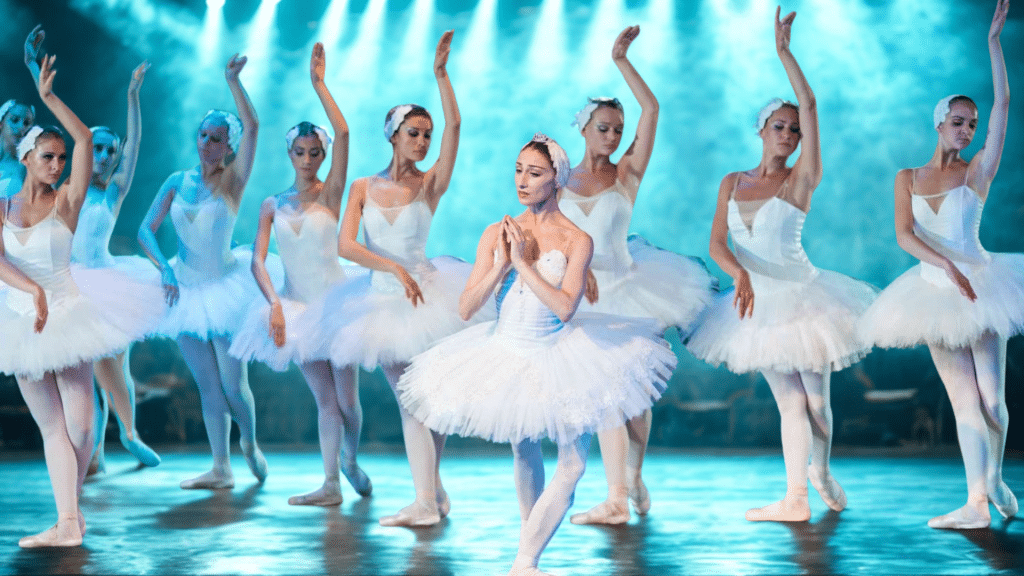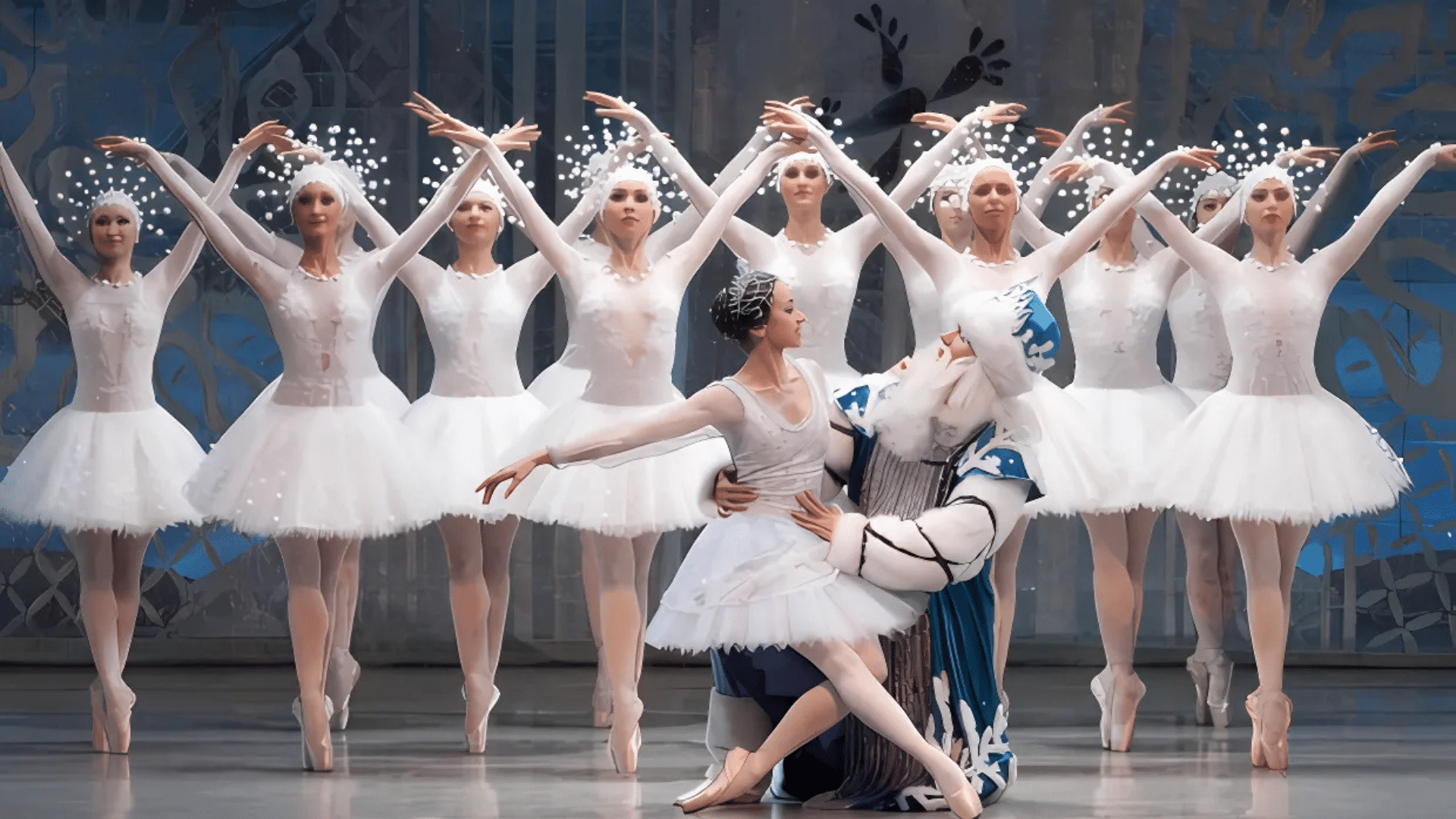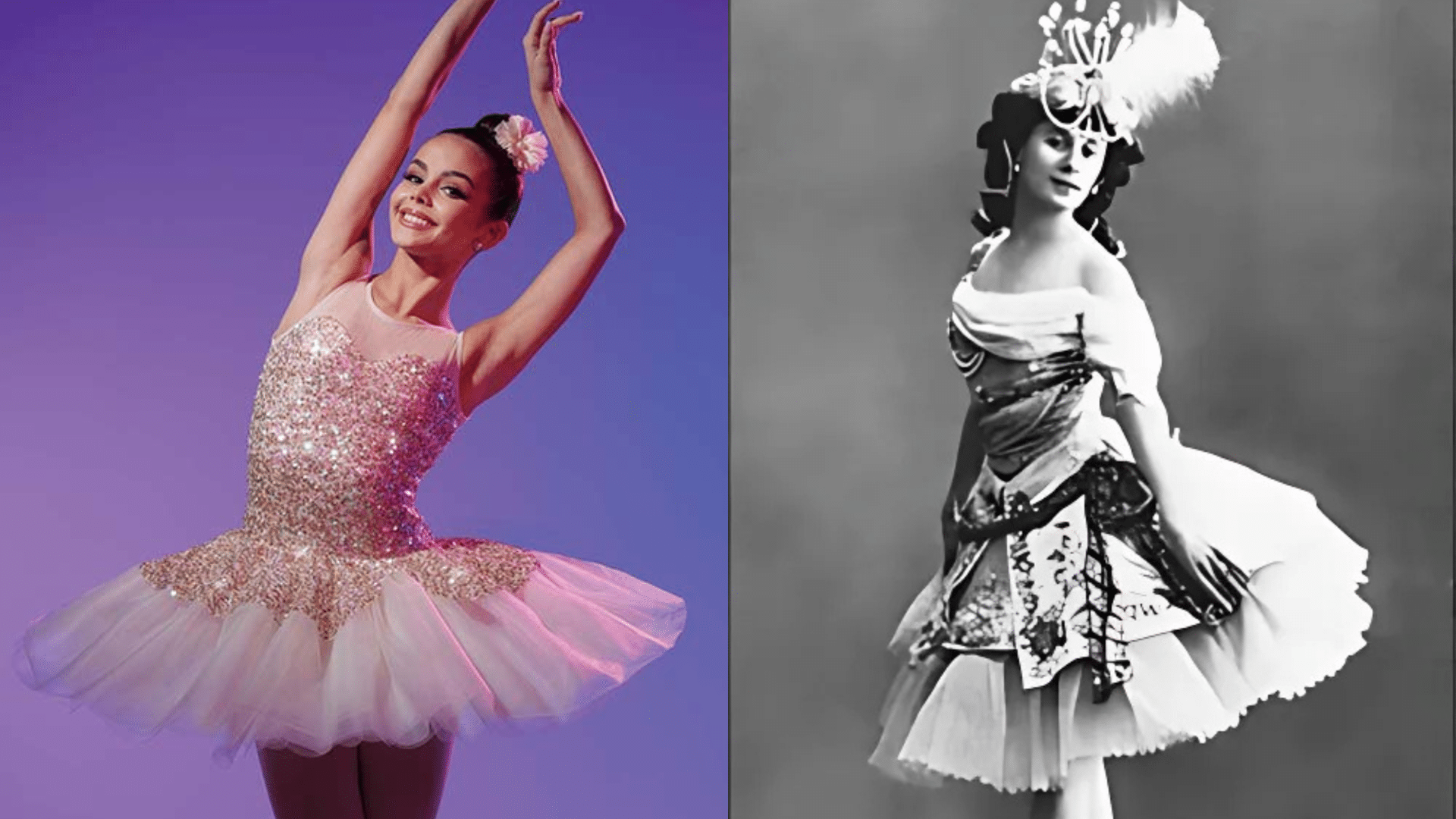You know what? Ballet gets a bad rap sometimes.
People think it’s all about those pink tutus and dancing on your toes. But honestly, there’s so much more going on here.
This art form has existed forever, starting in royal courts and spreading to stages worldwide. Some aspects remain unchanged, but others have evolved.
Doesn’t matter if you’ve never seen a ballet or if you’re practically a pro – I promise you’ll learn something that’ll surprise you.
I’m breaking this down into three parts: the old days, what’s happening today, and all the cool stuff dancers wear and use.
Facts Related to the Old Form of Ballet
These facts highlight how ballet began, evolved in courts, and was shaped into a disciplined art form through foundational practices.
-
Ballet originated in Italian Renaissance courts as a form of entertainment that combined music, poetry, and simple dance steps. It was performed for nobles at lavish parties and events, and its themes were often drawn from mythology and politics.
-
Early ballets were performed in large halls, not on raised stages, with guests watching from all sides. This meant dancers had to project movement clearly from every angle, impacting their technique and patterns.
-
Ballet was once performed only by men; even female roles were performed by male dancers in masks and wigs. It wasn’t until the late 1600s that women were allowed to perform on stage.
-
King Louis XIV of France performed in many ballets and gave the art form royal support and structure. He often danced lead roles and demanded strict discipline in training.
-
Pierre Beauchamp, the king’s dance teacher, codified the five ballet positions still taught worldwide today. These positions became the base for nearly every ballet move that followed.
-
Baroque ballet focused more on upper body grace than leg strength or jumps, which are common in modern ballet. Arms moved in flowing gestures, often mimicking court manners and etiquette.
-
Early ballet dancers wore heeled shoes and heavy garments, making large jumps or turns nearly impossible. Costumes were more decorative than functional.
-
Many early ballets included spoken word and were closer to stage plays than what we call ballet now. Dance scenes would interrupt long spoken passages in French or Italian.
-
Jean-Baptiste Lully composed ballet music that matched court dances, helping ballet shift from a party act to theater. His work was central in establishing ballet in opera houses.
-
The Paris Opera Ballet, founded in 1669, is the world’s oldest and one of the most respected ballet companies. It helped shape ballet as a formal performance art.
-
Ballets in the 1700s often celebrated mythological or royal themes, reflecting the ideals of the time. Characters like gods, kings, and nymphs were common.
-
Before facial expression training became standard, dancers used fans and masks to improve their gestures and mimic emotions. This added visual flair to storytelling.
-
The ballet master had total control and trained dancers for months in silence, using only demonstration and repetition. Music came later in rehearsals.
-
Original ballet movements were designed to mirror fencing, a skill many noblemen also practiced. Precision, posture, and form were highly valued.
-
Stage entrances in old ballets were slow and ceremonial, meant to show off costumes and grace more than speed. Timing was linked to decorum.
Facts About the Modern Form of Ballet
This focuses on contemporary ballet practices, training, global impact, and creativity in choreography.
-
Modern ballet includes more athletic movement and places heavy emphasis on jumps, turns, and floor work. Dancers are now trained to be both strong and graceful.
-
Today’s ballet dancers begin training as young as age 5 and often practice for hours daily.
Early discipline builds muscle memory and technique. -
Classical ballet remains popular, but modern ballet incorporates jazz, hip-hop, and even breakdance influences. It reflects changes in audience taste and music.
-
George Balanchine introduced neoclassical ballet, reducing sets and costumes to let pure movement shine. His work shaped American ballet.
-
Ballet is now performed by diverse casts worldwide, with schools and companies on every continent. It is no longer exclusive to European cultures.
-
Pointe work, once reserved for a few soloists, is now standard for most female ballet dancers.
It demands years of preparation and strength. -
Ballet competitions allow young dancers to showcase skills and win scholarships, starting from the age of 10. These events often shape careers.
-
Today’s choreographers study social issues through ballet, including identity, conflict, and mental health. The themes are more personal and varied.
-
Many modern ballets skip the fairy tale plots and instead focus on pure emotion or abstract movement. They use movement to suggest, not narrate.
-
Dancers now train in cross-disciplines like Pilates, yoga, and weightlifting to support their physical demands. Injury prevention is essential.
-
Popular ballet companies today include the Bolshoi, Royal Ballet, and American Ballet Theatre.
Each has its style and strengths. -
Video recordings and online classes have changed how ballet is taught and learned across the globe. Virtual stages are growing.
-
Dancers often have short careers, retiring in their 30s due to the physical strain.
Many shift to teaching or choreography. -
Male dancers in modern ballet perform powerful leaps and lifts, often partnering in complex sequences. Strength and control are vital.
-
New works are constantly being commissioned to keep ballet fresh and connected to present-day themes. This ensures the art form stays alive.
Facts About Costumes and Stage Gear
These facts show how outfits, footwear, and stage technology shape ballet performances.
-
Ballet costumes started heavy and formal but are now lightweight, stretchy, and tailored for movement. Function has become just as important as appearance.
-
The tutu first appeared in the 1800s and evolved to be shorter to highlight footwork and leg movement. Romantic and classical tutus differ in shape.
-
Pointe shoes have a reinforced toe box made of fabric, glue, and paper, not wood.
They support dancers while appearing soft. -
Depending on the choreography, dancers can wear one pair of pointe shoes per performance. Shoes are often custom-fitted.
-
Stage lighting improves mood and guides focus in ballet performances. It also highlights the dancer’s form.
-
Ballet makeup is bold to ensure expressions can be seen from a distance. It includes strong eyes and defined brows.
-
Male dancers wear tights and fitted tunics for clean lines and full mobility. Costumes should never distract from movement.
-
Headpieces, tiaras, or hats are often used in story ballets to indicate royalty, character, or status. Accessories help build identity.
-
Leotards became common in the 20th century for rehearsals and performances alike.
They’re functional and show alignment clearly. -
Costumes often include hidden fasteners or elastic bands to allow quick changes backstage.
Speed and comfort matter in transitions. -
Some ballets require fake blood, wings, or elaborate masks for fantasy effects. Backstage crews are key to making these work.
-
Floor types affect ballet: sprung floors reduce injury, while slippery floors can be dangerous.
Studios and theaters invest in proper surfaces.
Conclusion
Pretty wild how ballet went from those fancy French courts to everywhere, right?
It’s kept that mix of grace and strength while picking up new stories along the way. That’s what makes it stick around – it changes but never loses what makes it special.
Whether you end up at a show or just think about ballet differently now, I’d say that’s a win.
Why not give it a shot? Check out a local performance or maybe try a beginner class.
You might surprise yourself with how much you actually love it.






















